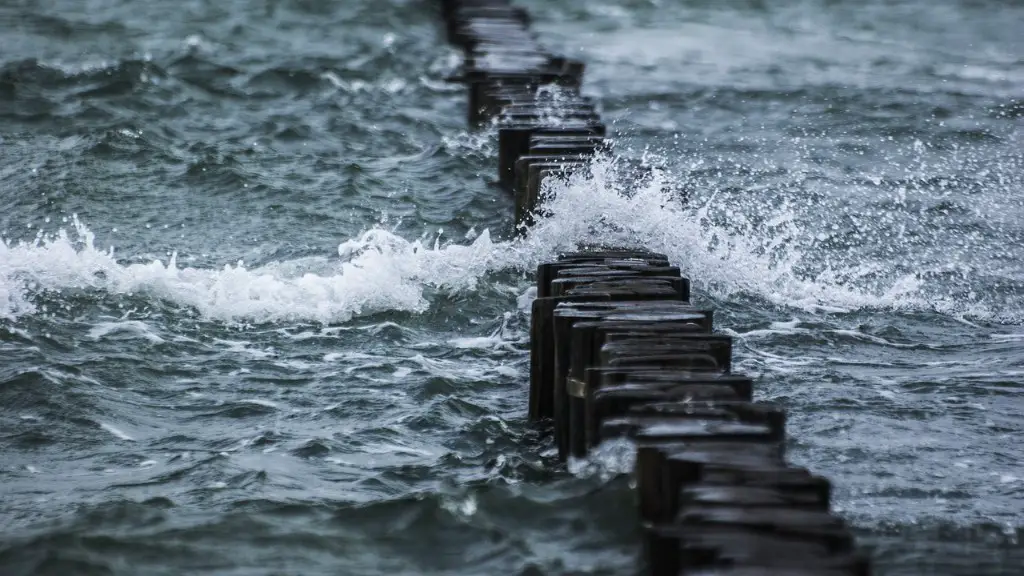The South China Sea has been a hotbed of conflict and diplomatic contention since the 1940s when China first asserted its control over the area. Overtime, China’s control of the region has been challenged by other nations, including the United States. China maintains that the region is its own and is a critical part of its long-term national security.
It is well documented that China has been beefing up its presence in the South China Sea for decades, particularly through the building of artificial islands and lagoons. This has been met with criticism from its neighbours, who claim that China is violating international law. Meanwhile, China maintains that its activities are within the bounds of international law and that its sovereignty should be respected.
In recent years, China has become increasingly aggressive in its assertion of control over the South China Sea. In 2016, it constructed a number of artificial islands in the region, which it claims gives it exclusive control over the area. This has led to criticism from other nations, who argue that this is against international law. Additionally, the US has deployed military vessels to the region in order to protect freedom of navigation.
China’s reasons for wanting control of the South China Sea are varied and complex. For starters, it is a key global shipping route, with an estimated one-third of the world’s maritime trade passing through the region annually. Chinese companies have also discovered a wealth of natural resources, including oil and gas, in the South China Sea, which they would like to exploit.
Moreover, the presence of several strategic military installations in the region makes it highly strategically important. Such installations include a number of radar and communication facilities, as well as a naval base. They are important for China’s national defence and it would be difficult for them to be replaced.
China also sees itself as the ‘rightful’ owner of the South China Sea and has pointed to historical records and documents to support this claim. It argues that the region has been part of China for centuries and that any other nation claiming ownership is violating its sovereignty.
In addition, China’s geopolitical ambitions have been bolstered by the fact that it is becoming an increasingly powerful nation. It has used its military and economic might to expand its influence and enforce its will upon its neighbours. This has created a worrying dynamic in the region, with many fearing a potential military conflict over the South China Sea.
Bolstering Sovereignty in the South China Sea
As a rapidly rising superpower, China has been focused on protecting and defending its interests it has in the South China Sea. This includes bolstering its sovereignty, maintaining economic interests at sea, and expanding its maritime military presence, as well as strengthening ties with like-minded countries in the region. To this end, it has been using a variety of ways.
One way it strengthens its sovereignty claims is through the construction of artificial islands and lagoons. In recent years, China has constructed a number of such facilities in the South China Sea, which allow it to project its presence in the region. In addition, it has been expanding its naval fleet in the region, allowing it to maintain its presence and intervene in any disputes that arise.
In addition, China has been signing bilateral agreements with other nations in the region. It has signed over twenty such agreements with members of the Association of Southeast Asian Nations (ASEAN) since the early 2000s. These agreements are seen as a way for China to assert its control over the region and have been harshly criticised by other nations, such as the US.
Furthermore, China has been involved in a number of diplomatic disputes in the South China Sea in recent years. These have included disputes over sovereign rights, as well as fishing rights and access to oil and gas reserves in the area. China has pushed for a resolution to these disputes in its favour, using its diplomatic influence to pressure other nations into concessions.
The Legal Position of the South China Sea
In the eyes of international law, the South China Sea is considered to be part of the global commons. This means that all nations have the legal right to access the area, provided they do so peacefully. Additionally, all nations are allowed to exploit the natural resources in the region.
However, China has argued that as the historic owner of the region, it has a special legal right to the South China Sea. In doing so, it citing the ‘Nine-Dashed-Line’ which it created in 1947. This was an area of the South China Sea that was claimed by the Chinese government and has since been the basis of its claims of sovereignty. The ’Nine-Dashed-Line’ policy has been hotly contested by neighbouring states such as Vietnam and the Philippines, who maintain that such a policy violates international law.
In addition, the United Nations Convention on the Law of the Sea (UNCLOS) does not recognise the ’Nine-Dashed-Line’ policy. Consequently, China has been forced to accept the fact that its legal right to the South China Sea is not as strong as it would have liked. As a result, it has been increasingly aggressive in pushing its territorial claims and has initiated a campaign to increase its military presence in the area.
Economic Implications of the South China Sea Dispute
There have been a number of economic implications of the South China Sea dispute. The most obvious of these has been the impact on global trade. The area of the South China Sea is a key shipping route for a variety of goods, and the presence of disputed waters has raised significant concerns about the potential for conflict. Furthermore, the presence of China’s artificial islands in the region has caused worries about China potentially blocking off the area to foreign ships.
In addition, the dispute over the South China Sea has had implications for the wider Asian economy. The region is an important source of natural resources, such oil and gas, and the conflict has disrupted the supply of these resources and had a negative impact on the economies of countries in the region.
Moreover, the dispute has affected the already fragile relationship between Chinese and its neighbours. Tensions between China and neighbouring countries have risen as a result of the conflict and this has had a detrimental effect on trade, investment and other economic ties.
Finally, it has had a direct impact on China’s economy. To reinforce its claims in the region, China has invested heavily in building up a military presence. This has included the construction of artificial islands, a naval base and other strategic installations in the South China Sea. This has put considerable strain on China’s already limited defence spending, and could potentially lead to cuts in other areas.
International Reactions to the South China Sea Dispute
The dispute in the South China Sea has been met with a mixed reaction from the international community. Many nations have criticised China for its actions, arguing that they violate international law. In particular, they have taken issue with the construction of artificial islands in the region and have called on China to cease its activities.
Meanwhile, some countries have taken a softer stance towards China. Russia, for example, has been less critical of China and has made moves to improve ties with the country. This has included signing military and economic agreements and offering its support for certain Chinese positions in the region.
Perhaps the most important reaction has been from the United States. The US has been one of the most outspoken critics of China’s actions in the South China Sea and has sent warships to the region in order to protect freedom of navigation. It has also sought to pressure China through diplomatic efforts, and has sponsored a number of regional initiatives aimed at resolving the disputes.
The Role of ASEAN
The Association of Southeast Asian Nations (ASEAN) has emerged as one of the most important bodies in the region with regards to the South China Sea disputes. ASEAN is made up of 10 countries in the region and has sought to promote stability and cooperation in the region through a range of diplomatic initiatives.
In 2016, ASEAN and China signed the Declaration on the Conduct of Parties in the South China Sea (DOC). This was aimed at preventing conflicts in the region and promoting peace and stability. Furthermore, ASEAN and China have also been involved in a number of negotiations aimed at settling disputes in the South China Sea.
Finally, ASEAN has been an important voice in international forums on the South China Sea dispute. It has sought to press its members’ cases with the international community, as well as promoting regional cooperation. This has put it in a position of influence with regards to the dispute and it will likely play an important role in any future diplomatic negotiations.
Conclusion
In conclusion, China has been increasingly assertive in claiming control of the South China Sea, with its presence in the region growing in recent years. This has caused a great deal of tension in the region, but it is clear that China’s motivation is driven largely by its economic, geopolitical and strategic interests. It has a number of legal and economic arguments to back up its claims, and international reactions to this have been mixed. ASEAN has also played an important role in the dispute, advocating for its members’ interests and pressing for diplomatic solutions.





